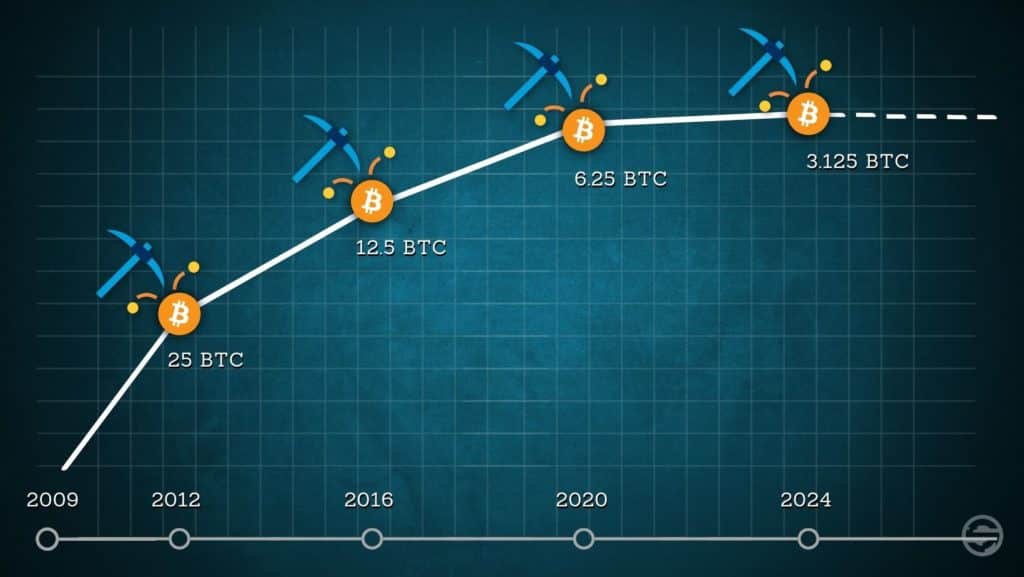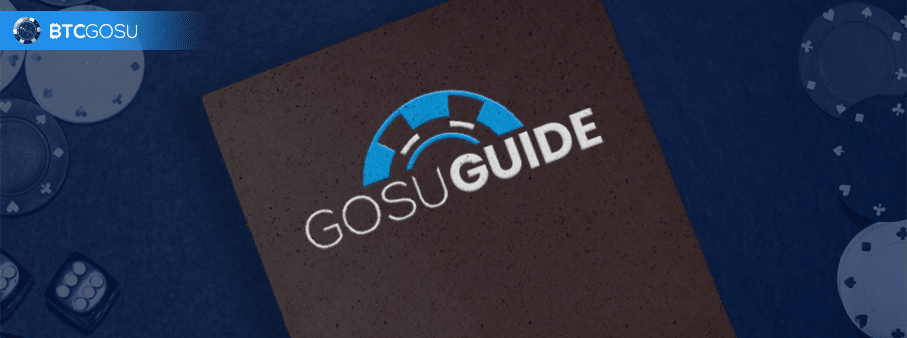It’s really been a while since I have been on this side of the screen, but luckily, it hasn’t been as long as the time since the last Bitcoin Halving. Bitcoin halving? What in the hell is that? Well, I assume that almost everyone reading a blog about crypto gambling is familiar with the term by now; but for those who are hearing it for the first time, or are not completely sure about what it is and means; I’ll explain ahead.
The basics
To explain what bitcoin halving means; we should first know what we are doing the “halving” to. It’s simple. We are dividing the block reward in half. Yes, I’m explaining what that actually means in a second, please don’t rush it…
Every time you send a BTC transaction, it gets put into a block, and then confirmed “in block”; meaning that all the transactions inside that block get confirmed at the same time. Bitcoin blocks are confirmed by miners; or computers doing calculations. Every time a computer finds a block, it gets rewarded. It’s that simple (in theory). Since you need a lot of computing power to actually solve (find) a block, miners create mining pools to combine their computing power and then share the reward sort of equally.
So, now we know that bitcoin is sent in blocks, blocks get “mined”, and the miners get a reward. But, what is that reward?
The precious
No, miners don’t get a ring as a reward. Nor do they have to go to Mordor to get rid of it. It is pretty intuitive, but Bitcoin miners get… Bitcoin as a reward! We could say that they “create” new bitcoins every time they find a block. And, what is the amount of Bitcoin they get? Well… it depends, because that’s what we are diving in half!
Some may have already guessed where this article is going, and yes, it’s about the amounts that miners get per block.

The very first early miners would get 50 whole Bitcoin per block mined. It’s no joke considering they could mine with their CPU in the very first years of BTC. Afterwards, they did realize that GPUs had way more power and were more efficient for the task at hand; and after that came the GPU farms and the ASIC miners, getting us where we are today. Fluctuating as it is, between $65k and $70k everyone would rush in to buy ASIC miners and have a farm of their own at home if the block reward was $3.250.000. But that’s not the case anymore. Rewards went down to 25BTC on the first halving, to 12,5 on the second, 6,25 on the third… and 3,125 on the next one.
As anyone can see, it’s a progressive halving, and we will reach a point in which the reward is of just some satoshis. Will this be the end of BTC mining? Hell no! And why is that? Because there is a second reward to finding a block. See, when miners find a block, they do get their fixed “new” BTC reward, but they also get the tx fees from all the transactions inside the block they found. And this is the reason higher fees get faster confirmations. Miners are “greedy” so they grab the big chunks of BTC first.
The halving
Knowing this, one may wonder: “How do people agree when to reduce the block reward?”. Thankfully, people don’t have to agree on anything. It’s something that is embedded in the Bitcoin code. The amount of “existing” Bitcoin is known (21 million). But the amount of “available” bitcoin is different. Why? Because we haven’t mined all of them yet. If the transaction reward didn’t get reduced, we would get there pretty quickly; so every 210.000 blocks, the reward gets halved. For the average Joe, this is once every 4 years, more or less.
Won’t it happen faster if we get more miners in the game? Nope. Because the average confirmation time for a Bitcoin block is 12 minutes. And I say average for a reason. To prevent exactly this situation; more miners finding blocks faster and less, slowlier; a value called “difficulty” was introduced. It pretty much means how difficult it is to find a block; giving the value in hashes per second. This value is dynamic and changes every 2016 blocks. So, if suddenly a lot of new miners join the network and start finding blocks very fast, the difficulty will go up. If there is a power outage in one huge mining far or a pool goes dark, the difficulty will go down. And that is how we get the 12 minute average. From there, we get to a halving happening every 4 years or so.
How does all of this affect me?
Great question! But the answer is mere speculation. Now, if you are here, we already know that you are a gambler, a person that likes taking risks, and quoting ourselves on a good article about risk management:
Given that crypto gambling is its distinct form of luck testing online, it features a set of inherent risks exclusive to it. First, everyone must understand that cryptos have a reputation for volatility (and with good reason). That means that price fluctuations can often happen and can be dramatic. That may lead to a loss of funds for held assets without a gambler doing much of anything. Moreover, a high degree of unpredictability gets linked with these price shifts, adding an extra uncertainty dose to the overall gaming experience. No one can tell for sure if a digital asset will maintain its value for one year and that it will surely grow, as countless factors can affect it.
What I want to say with this; historically, the months following a halving event have been volatile. VERY volatile. Does this mean the same will happen now? Of course not. If I knew what is about to happen with BTC price, I’d be doing some very profitable things with that. Most of the community and experts agree that the price will most likely skyrocket, put it’s mere speculation. Don’t get me wrong, I’m all in for the price to hit the moon, but it’s not something we can know for certain.
The glorious day
And of course, we have to get to the most important part of the article: When will the halving occur? A few lines above, I did explain a few things about the average block time. So taking that average into consideration; the halving will occur on April 20th; it’s pretty hard to narrow it down any further; but I’m sure some bookies are open to receiving bets on that.
Since it’s an important event in the crypto community, and it only happens every 4 years; it’s also very likely that some of the best crypto casinos will launch a special promotion for this event. Just don’t forget to check our blog to catch the best promotions!
TL;DR
Every 4 years approximately, the mining reward for finding a bitcoin block gets reduced in half. This year, the reward will be reduced to 3,125BTC. This is a deflationary measure that helps Bitcoin keep a steady supply while reducing the offer. Considering it’s an important event, some casinos will surely run promotions to commemorate this date!





Login
Register